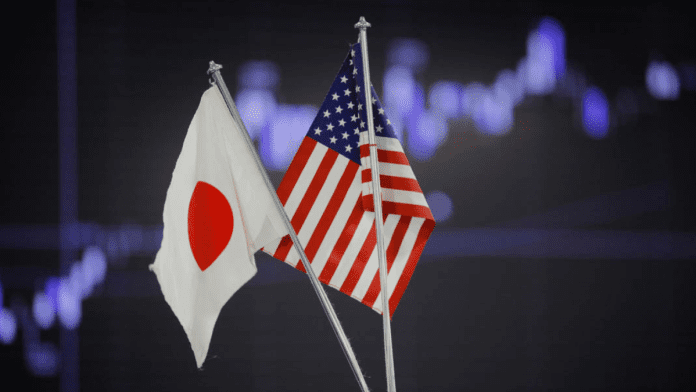The United States and Japan have reached a landmark trade agreement that cuts tariffs on auto imports and cancels planned duties on other goods. Announced by President Donald Trump, the deal marks a major shift in trade policy and comes with a massive $550 billion investment and loan commitment from Japan. The agreement brings relief to Japanese exporters and raises concerns among American automakers, who say the deal may hurt domestic production.
Trump Cuts Auto Tariffs, Halts Planned Duties on Japanese Goods
As part of the new trade agreement, the U.S. will reduce tariffs on Japanese vehicles from 25% to 15%. This is a major win for Japan’s auto industry, which makes up over a quarter of Japan’s exports to the United States. The tariff cut also prevents a new round of duties that were set to take effect on August 1, which would have impacted many Japanese products.
President Trump called the agreement “the largest TRADE DEAL in history with Japan” and emphasized that it would help preserve strong U.S.-Japan relations while protecting key sectors of the American economy.
🚨 Real rigged? Brazil probes insider leak tied to Trump tariffs and Bolsonaro circle
The deal follows intense negotiations between officials from both countries. Ryosei Akazawa, Japan’s top trade negotiator, met with Trump at the White House to finalize the agreement. After the deal was announced, Akazawa posted “#Mission Complete” on social media.
Japan Offers $550 Billion and More U.S. Farm Imports
In exchange for lower tariffs, Japan has committed to a $550 billion investment and loan package focused on building strong and reliable supply chains in the U.S. According to Japanese minister Ishiba, the funds will come from government-affiliated institutions and will support industries like pharmaceuticals and semiconductors.
Japan also agreed to increase purchases of U.S. agricultural products, including rice. However, Ishiba clarified that this would not negatively impact Japanese farmers and said the agreement stays within existing trade rules.
U.S. Unleashes New Trade Weapon—25% Tariffs to Hit Japan, South Korea
Notably, the agreement does not cover Japanese exports of steel and aluminum, which will still face a 50% tariff. There was also no agreement related to military or defense contributions.
Despite those exclusions, Japanese officials view the deal as a positive outcome. Kazutaka Maeda, an economist at Meiji Yasuda Research Institute, noted that the reduced auto tariff may help Japan avoid recession, as it secures a major export route without harsh penalties.
U.S. Automakers Warn of Uneven Playing Field
While the Japanese government praised the agreement, U.S. automakers voiced strong opposition. They argue that the new tariff rates unfairly favor foreign-built vehicles. Matt Blunt, president of the American Automotive Policy Council, which represents General Motors, Ford, and Stellantis, criticized the deal for keeping higher tariffs—25%—on cars built in North America, including those from Canada and Mexico.
EU retreats—for now: €21B tariff blitz paused as Trump threatens Europe with economic war
“Any deal that charges a lower tariff for Japanese imports with virtually no U.S. content than the tariff imposed on North American-built vehicles with high U.S. content is a bad deal for U.S. industry and U.S. auto workers,” said Blunt.
In 2024, the U.S. imported over $55 billion in vehicles and auto parts from Japan, while exports of American vehicles to Japan totaled just over $2 billion. The U.S. trade deficit with Japan stood at nearly $70 billion, making this deal critical for both sides.
With the August 1 deadline approaching, the Trump administration is working to wrap up additional trade agreements. Talks are underway with the United Kingdom, Vietnam, Indonesia, and the European Union.
